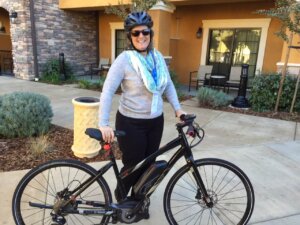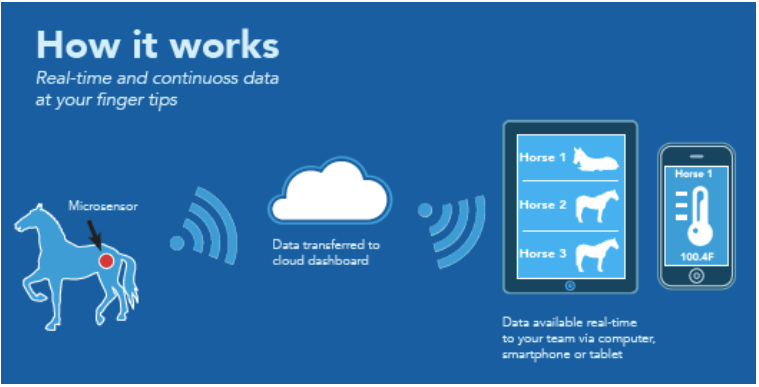 Each year the MEMS Industry Group (heretofore known a the MEMs and Sensors Industry Group), turns the spotlight on some of the really cool ideas that have come out of MEMS and Sensors technology at its annual MEMS Executive Congress, which this year was held November 4-5, 2015 at the Meritage Resort and Spa, in Napa Valley CA. After all the necessary and important keynotes and presentations about where the MEMS market is going, what challenges are we are facing, and what we should do about it, it’s time for the fun part. This year’s offerings provided solutions enabling the connected world, and touched on everything from gaming, to autonomous vehicles, to sports and health applications, and more.
Each year the MEMS Industry Group (heretofore known a the MEMs and Sensors Industry Group), turns the spotlight on some of the really cool ideas that have come out of MEMS and Sensors technology at its annual MEMS Executive Congress, which this year was held November 4-5, 2015 at the Meritage Resort and Spa, in Napa Valley CA. After all the necessary and important keynotes and presentations about where the MEMS market is going, what challenges are we are facing, and what we should do about it, it’s time for the fun part. This year’s offerings provided solutions enabling the connected world, and touched on everything from gaming, to autonomous vehicles, to sports and health applications, and more.
Who wouldn’t be seduced by the opportunity to ride in a time machine? This year’s winner of the MEMS and Sensors Technology showcase, Bosch’s eBike Systems, presented by Jonathan Weiner, offered just that. Jonathan introduced us to “Rupert” a “super commuter” bike with pedal-assist technology that amplifies human pedal power with electric power to give the rider the experience that they are being pushed by a tailwind while cycling. An “anti-gravity machine”, this bike flattens hills and makes the rider feel younger and more powerful. It puts out-of-shape people back on a bike, and allows injuries to heal. See? It IS a time machine.
The magic provided by Bosch includes a battery pack; a 250 watt drive unit consisting of a torque sensor, pedal speed sensor, and wheel sensor, motor and gearbox; and control unit that allows you to select how much tailwind you want. I can personally attest that it’s easy to handle, and super fun to use. It was such a beautiful afternoon in Napa when I took my test ride, and the pedaling was so effortless, that I almost just took the afternoon off. But I knew I couldn’t hog all the fun, so I reluctantly returned so someone else could take it for a spin (thanks Kathy Cook, for letting me take a video of you on the bike!)
Another worthy entry in the showcase that promised to make life easier for veterinarians whose charges are of the equine variety was the Horse Sense Pegasus Equine System for monitoring critical vital signs that previously required a more “hands-on” approach (I will spare the reader the gory details – you get the idea). It works via a microsensor device that attaches to the horse’s tail and detects abnormal conditions and can alert the animal’s caregivers via smartphone, tablet and computers. This provides owners, veterinarians, and trainers with 27/7/365 access to critical vital signs and postural behavioral/activity data (Figure 2).

While the starting point of the market for this device is the horse racing industry, which is somewhat niche, presenter, Ian Chen, Freescale, noted that the “asset value” of this application is what it represents: the development of microsensor technology for real-time biometrics that saves time and labor by reducing the need for manual checks. Plus, he added, “If we had wearable fart monitors, getting to a trillion sensors would be no problem.” (Even in high tech, bathroom humor never gets old.)
Speaking of gas sensors, Jess Brown, Cambridge CMOS Sensors, demonstrated the company’s recent offering for sensing volatile organic compounds (VOCs) in the air. The first product based on this sensor technology is the Atmo2, a simple, keychain-size handheld device that detects air quality in a room and glows when it’s bad, alerting the user to do something: turn on ventilation, open a window, leave the room, etc. When the sensor is integrated into a smart-home hub, it can be set up to turn on ventilation automatically.
What makes this sensor different than others is that its CMOS-based, so doesn’t need to be manufactured in a special MEMS fab. It’s more robust and stable than alternatives, and is the lowest cost, smallest VOC sensor on the market, says Brown. “It’s really opening up the markets that traditionally wouldn’t be available for a gas sensors,” he said. Brown also demonstrated a very useful consumer application for this sensor: one that turns your smartphone into a personal breathalyzer test. That’s an application that has the potential to save lives.
Another potentially life saving device presented during the technology showcase was the MonBaby, by MonDevices. This smart button sensor and smartphone app combination provides parents with peace of mind (and a better night’s sleep), as it displays the breathing movement and body position of the baby wearing the device. These two indicators are critical in detecting the “silent threats” that lead to sudden infant death syndrome (SIDS) and strangulation, unlike audio and video monitors, which are triggered by crying (in and of itself an indication of life.) MonBaby is powered by a Freescale accelerometer that features sensitive orientation detection, motion detection, and free-fall shake detection.
The finally product presented in the technology showcase was a magnetometer from Voltafield that targeted the mobile and wearables market. In comparison to the traditional Hall magnetometer, this claims to be lower power, higher performance, and lower cost. It recalibrate easily and can be used as a soft-gyroscope for gaming devices and in compass applications. The company demonstrated it using a shooting app-based game – not my first choice – but I got the picture. What was most interesting to me is that it achieves its low power and high performance by vertically integrating the ASIC, the AMR sensor in a wafer-level chip scale package.
For every one of these technologies being showcased at MEMS Executive Congress 2015, there are numerous others being developed that are just as cool, or perhaps even cooler. And while there are no doubt still many challenges to overcome as this industry matures, as Alissa Fitzgerald, AM Fitzgerald and Associates noted during her keynote, what the next big thing in MEMS and sensors will be is the billion dollar question. “Nobody has a crystal ball,” she said. “We have to innovate and engineer our way to the future. Some ideas will fail, and others will succeed.” Congratulations to those with success stories. ~ FvT



















